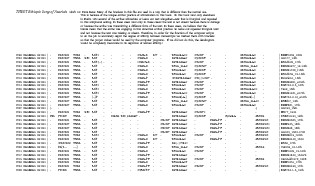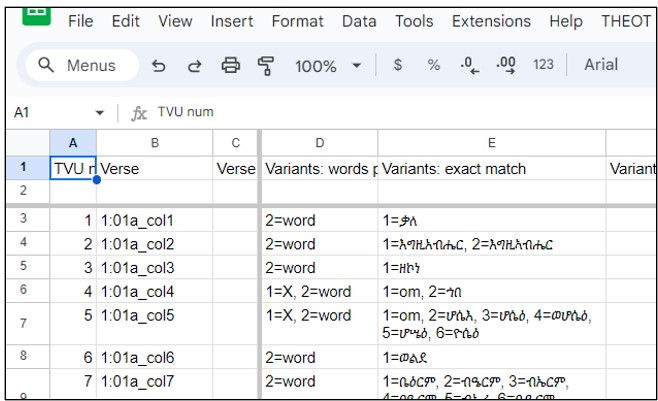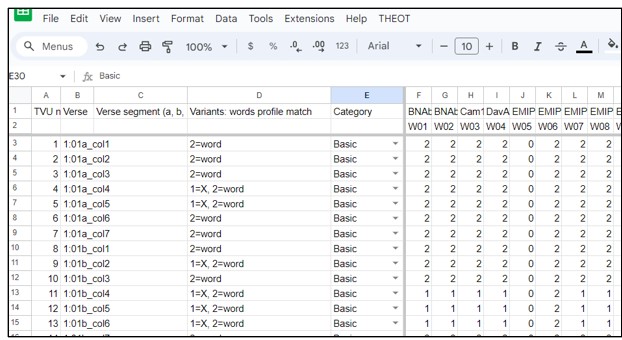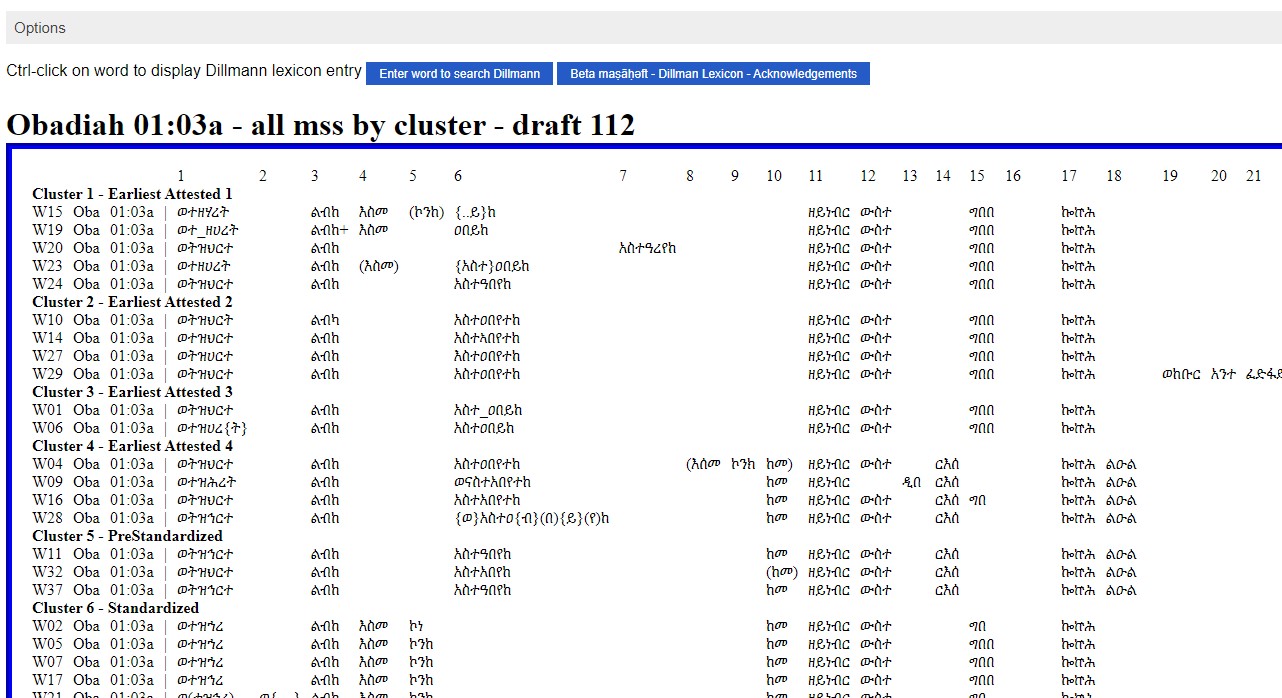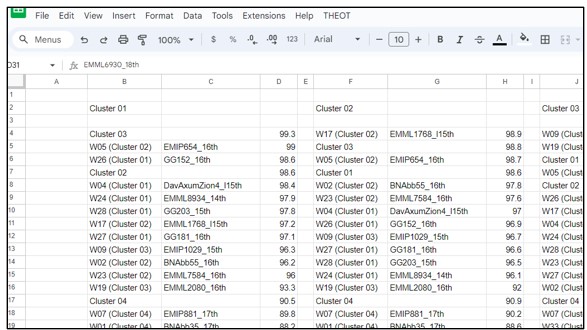Materials for the
Study of Ethiopic
Song of Azariah
We...
Turn text into numbers.
Identify patterns in the numbers.
Turn numbers into stories.
Ethiopic Song of Azariah
Texts
Profile
Match

Text
Viewer
Representative
Manuscripts
- Sample of the Text: Dan Song of the Three Children 3:24-90
- Sample Size: 100% of the book.
- Sample of Manuscripts: 31. BN Abb 016 (19th), BN Abb 035 (17th), BN Abb 055 (15-16th), BN Abb 137 (19th), BN Eth 07 (14th), BN Eth 50 (17th), Cam Add. 1570 (1588), Dav Axum Zion 1 (15th), EAP 704-1-05 (15th), EAP 704-2-06 (16th), EAP 704-2-12 (e16th), EMIP 881 (17th), EMIP 945 (18th), EMIP 1029 (15-16th), EMIP 1051 (17th), EMIP 1063 (1895), EMIP 1070 (1914), EMML 38 (18th), EMML 0819 (l18th), EMML 1481 (e17th), EMML 1768 (l15th), EMML 1842 (1662/3), EMML 2440 (1663), EMML 6686 (17th), EMML 6977 (13-14th), EMML 8433 (17th), EMML 9001 (e15th), GG 106 (1682-1706), GG 177 (14th), GG 193 (15th), IES 77 (1934), Tanasee 9 (15th), UNES 02.10 (1913), UNES 02.11 (1927), UNES 10.34 (1931), Vat 263 (13-14th).
- Number of Data Points Generated: 31,434.
- Earliest Attested 1 Best Representative – EMML 6977 (13-14th).
- Earliest Attested 3 Best Representative – EAP 704.2.6 (16th).
- Standardized 1 Best Representative – GG 106 (1682-1706) and EMML 38 (18th).
- Standardized 2 Best Representative – EMML 2440 (1663).
-
Minor Recensions:
- Earliest Attested 6 / Modern Textus Receptus 2 Best Representative UNESCO 10.34 (1931), and EMIP 949 (e20th), EMML 7942 (20th, neither a part of the sample) represent a minor recension, translated from the Latin Vulgate, with a 24% degree of difference from the rest of the tradition.
Other findings related to Ethiopic Daniel: We have evidence of three distinct recensions of Ethiopic Daniel. The primary recension is carried in virtually all of the extant manuscripts of the Ethiopic tradition. The best representative of the earliest attested text can be found in BN Eth 7 (14th century). Vienna Eth 16 (a manuscript with text and commentary (tergwame) contains a second recension of the book of Daniel. See Löfgren, O. (ed.), Die äthiopische Übersetzung des Propheten Daniel (Paris: Paul Geuthner, 1927); and Sima, A., “kona yeqattel in einer Wiener Handschrift des äthiopisches Danielbuches,” Oriens Christianus 87(2003):123–29. who studied it and concluded that it was a new translation from Arabic. We discovered that EMIP 1074 contains a matching text to the one in Vienna Eth 16, giving us now two witnesses to this early recension (in terms of the extant manuscript tradition). Unfortunately, neither Vienna Eth 16 nor EMIP 1074 were included in our study of Ethiopic Daniel. However, Niccum wrote about it in “3.5 Daniel, Additions to, Ethiopic,” pages 158–160 in The Textual History of the Bible, vol. 2B, A. Lange and E. Tov, eds. (Leiden: Brill, 2018). We have identified in UNESCO 10.34 a third recension of Ethiopic Daniel. It appears to be another example of the translation of the Latin Vulgate into Ethiopic, as it clearly is in the minor prophets.
